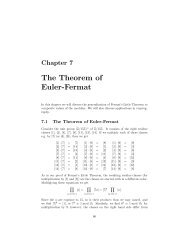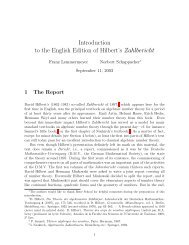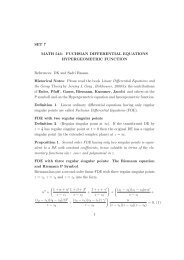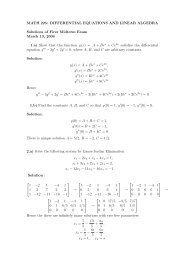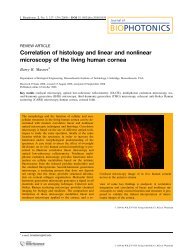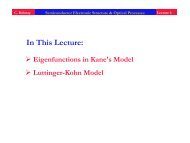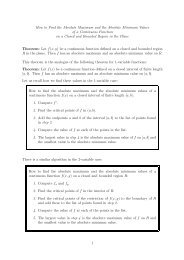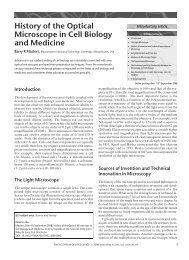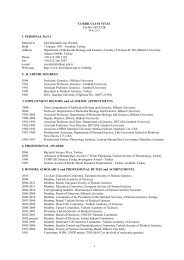Radiation properties of a split ring resonator and monopole composite
Radiation properties of a split ring resonator and monopole composite
Radiation properties of a split ring resonator and monopole composite
You also want an ePaper? Increase the reach of your titles
YUMPU automatically turns print PDFs into web optimized ePapers that Google loves.
Original<br />
Paper<br />
phys. stat. sol. (b) 244, No. 4 (2007) 1193<br />
Fig. 1 (online colour at: www.pss-b.com) a) Schematics <strong>of</strong> a <strong>split</strong> <strong>ring</strong> <strong>resonator</strong> (SRR). b) Schematics<br />
<strong>of</strong> the SRR inserted <strong>monopole</strong> antenna. c) Schematics <strong>of</strong> the coaxial cable. d) Measured S11 for the<br />
<strong>monopole</strong> source <strong>and</strong> <strong>monopole</strong> SRR <strong>composite</strong>.<br />
transmit the TEM mode waves up to 65 GHz safely. The ground plane material is aluminum <strong>and</strong> is connected<br />
to the shield by a conducting paste. It is 0.5 mm thick <strong>and</strong> has a square shape with an edge length<br />
that is equal to the free space wavelength. The operation frequency was 3.52 GHz, which was determined<br />
by conside<strong>ring</strong> the SRR’s geometrical parameters. The corresponding free space wavelength (λ)<br />
was 85.17 mm. The length <strong>of</strong> the wire above the ground plane was 8.32 mm <strong>and</strong> for the <strong>monopole</strong> antenna<br />
this length corresponds to a quarter <strong>of</strong> the operation wavelength. Thus this <strong>monopole</strong> antenna was<br />
working efficiently when feed wavelength was 33.28 mm <strong>and</strong> feed frequency was 7.8 GHz. Therefore,<br />
the SRR resonance frequency is smaller than the <strong>monopole</strong> operation frequency. The SRR is positioned<br />
rather close to the radiating wire part <strong>of</strong> the <strong>monopole</strong> antenna.<br />
At the operation frequency, 3.52 GHz, the wire part <strong>and</strong> SRR behave as a <strong>composite</strong> radiating structure.<br />
The characteristic impedance <strong>of</strong> the coaxial cable <strong>and</strong> wire SRR <strong>composite</strong> becomes very close, in<br />
which the surface currents on the SRR increase an order <strong>of</strong> magnitude <strong>and</strong> the structure starts to radiate<br />
efficiently.<br />
For the theoretical calculations, we simulated the structure via the commercial program: Computer<br />
Simulation Technology Microwave Studio (CST MWS). There was a considerable change at the S11 <strong>and</strong><br />
at the surface current at the operation frequency with respect to a nonresonant frequency. S11 reduced to<br />
–30 dB from –3 dB <strong>and</strong> the surface current increased from 90 A/m to 2460 A/m. For the experimental<br />
demonstration, we used an HP8510C Network Analyzer. After a full two port calibration we measured<br />
the <strong>monopole</strong> antenna S11 in order to determine its efficient operation frequency, which is 7.8 GHz.<br />
Subsequently, we measured the S11 parameter between 3 GHz <strong>and</strong> 5 GHz (Fig. 1d). We observed that<br />
the <strong>composite</strong> to be a –32 dB S11 value.<br />
www.pss-b.com © 2007 WILEY-VCH Verlag GmbH & Co. KGaA, Weinheim



